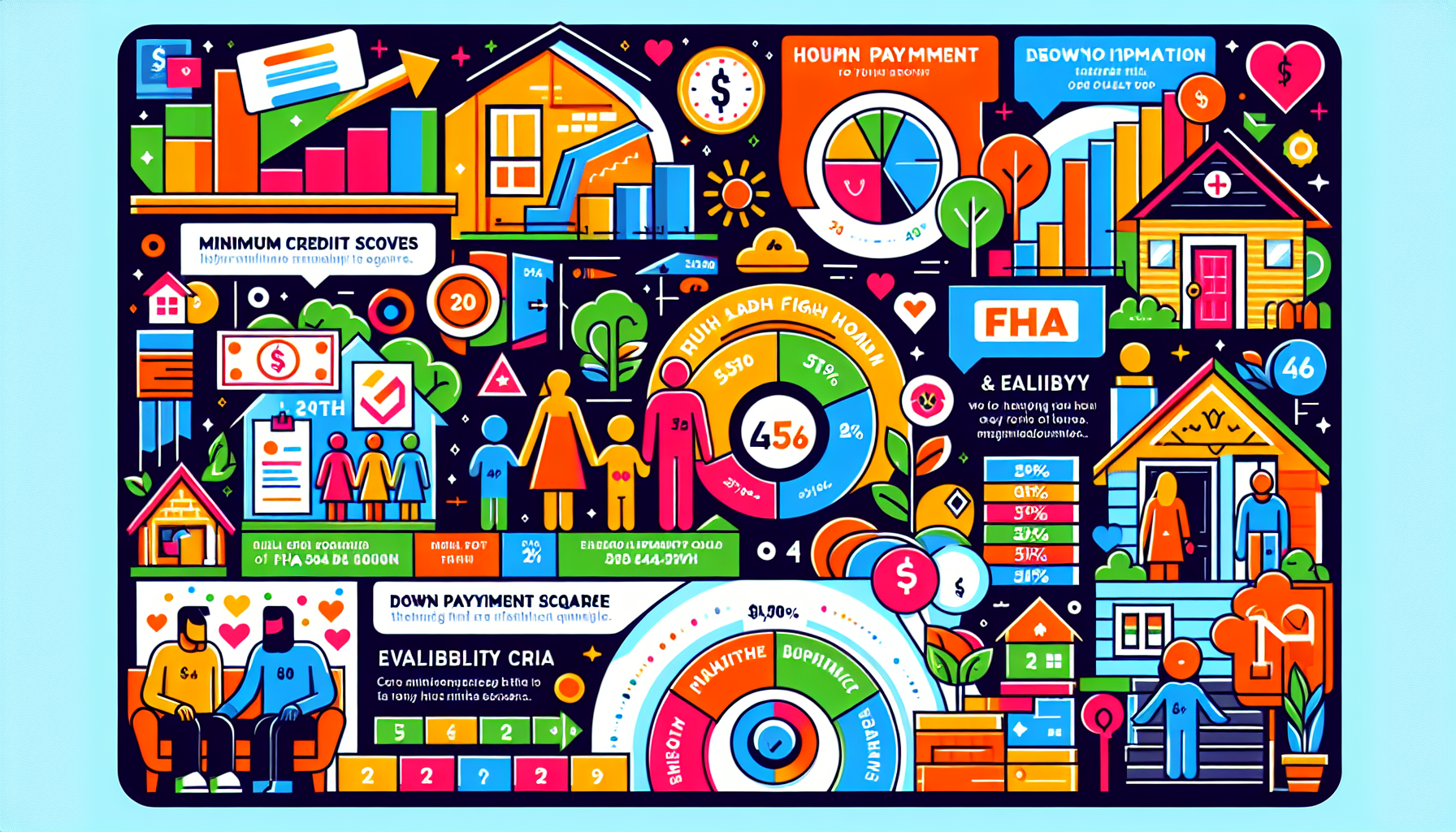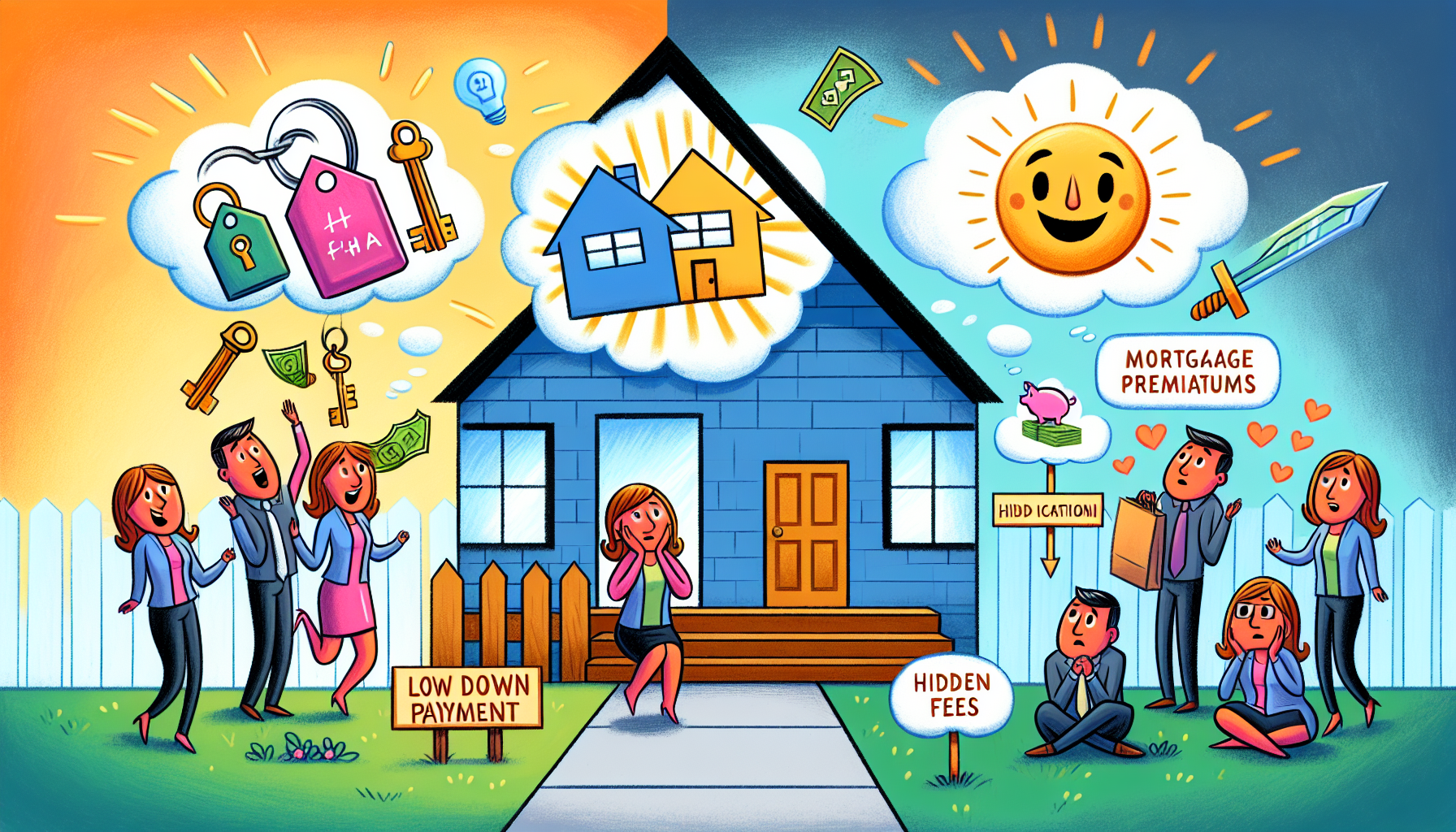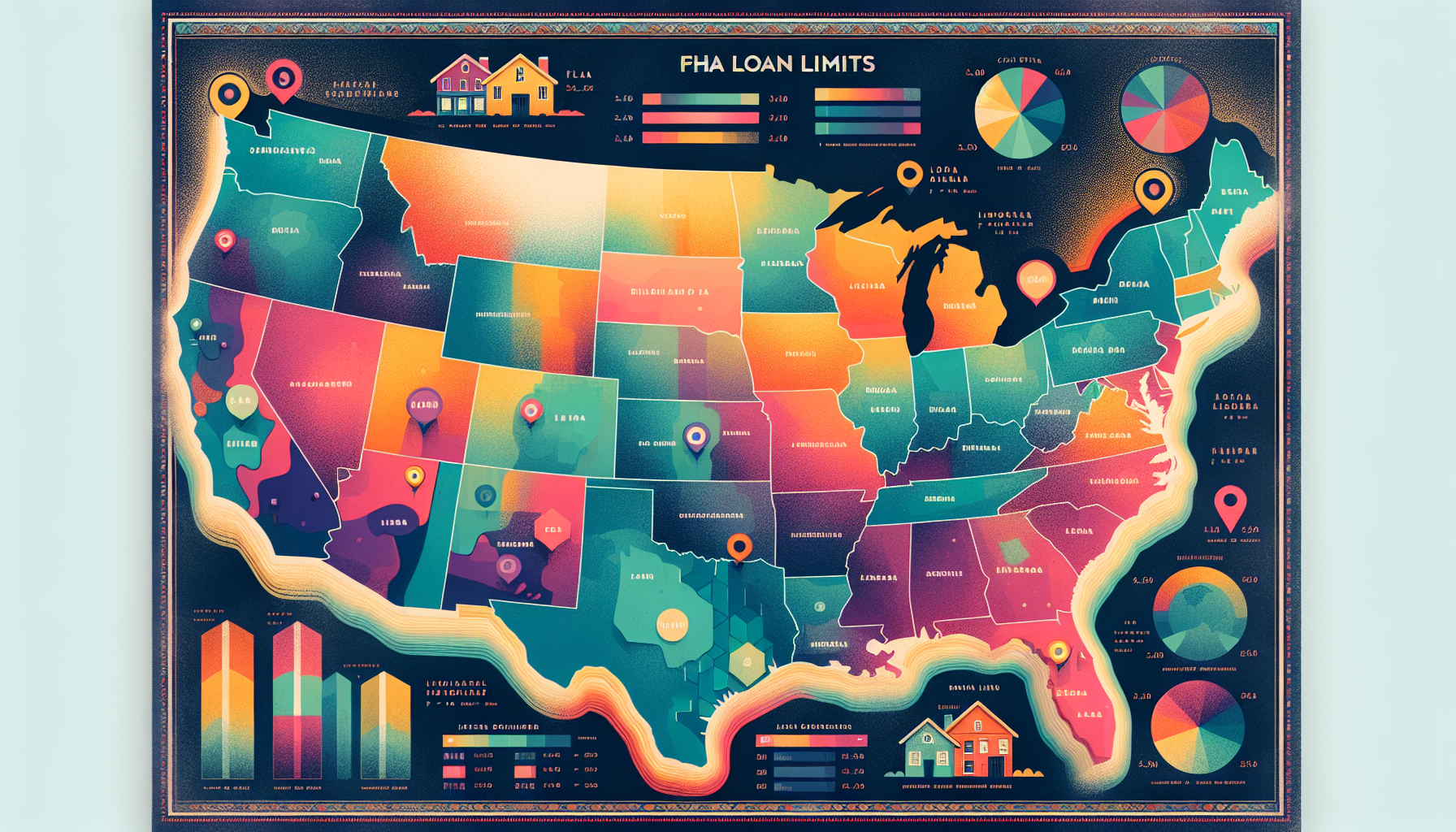What Is an FHA Loan and How to Qualify
An FHA loan, or what is an FHA loan, is a type of mortgage insured by the Federal Housing Administration. It is designed to make homeownership more accessible for first-time buyers and those with low to moderate incomes by offering lower down payment and credit score requirements.
Key Takeaways
- FHA loans are designed to make homeownership accessible for first-time buyers and those with lower incomes. They feature flexible credit and down payment requirements.
- Borrowers can secure FHA loans with down payments as low as 3.5% if they have a credit score of 580 or higher, significantly lower than conventional loans.
- The FHA offers various loan types, including options for refinancing, home improvements, and energy-efficient upgrades, catering to a wide range of borrower needs.
Understanding FHA Loans

FHA loans, or Federal Housing Administration loans, are home loans insured by the FHA. Their main purpose is to facilitate homeownership, particularly for first-time homebuyers and those with low to moderate incomes. They are designed to make the home-buying more accessible, especially for those struggling with poor credit or limited savings for a down payment.
One of the standout features of FHA loans is their accessibility to borrowers with a lower credit score. Unlike conventional loans, which can be stringent in their credit score requirements, FHA loans typically start with a minimum credit score of 500. This inclusivity allows a broader range of individuals to qualify for home financing.
Down payments for FHA loans are also more flexible. Borrowers with credit scores of 580 or higher can make a down payment as low as 3.5%, significantly lower than the typical 20% required by conventional loans. Even those with credit scores between 500 and 579 can still qualify, though they must make a 10% down payment.
Furthermore, FHA loans come with competitive interest rates, enhancing their affordability. The FHA allows a higher debt-to-income ratio, up to 57%, giving borrowers more flexibility than conventional loans. These features collectively make FHA loans a viable and attractive option for many aspiring homeowners.
Key Features of FHA Loans
FHA loans come with several key features that make them particularly appealing to a wide range of borrowers. One of the most notable features is the low down payment requirement. Borrowers with a credit score of 580 or above can secure an FHA loan with as little as 3.5% down, which is significantly lower than the typical 20% required for conventional loans.
Another major benefit is the flexibility in credit score requirements. Borrowers with lower credit scores can still qualify for FHA loans, making homeownership accessible to those who might not meet conventional lenders’ stringent criteria. This inclusivity is a game-changer for many potential homeowners who have faced financial challenges.
FHA loans also allow for higher debt-to-income ratios compared to conventional loans. This means borrowers can have higher levels of existing debt and still qualify for a mortgage. This flexibility can particularly benefit those with student loans or other significant debts.
These features collectively make FHA loans a powerful tool for increasing homeownership among diverse populations.
History and Purpose of the Federal Housing Administration (FHA)
The Federal Housing Administration (FHA) was established on June 27, 1934, as part of the National Housing Act. Its creation was a response to the economic challenges of the Great Depression, aimed at enhancing home financing and improving housing standards. The FHA’s mission was to spur homeownership at a time when high default and foreclosure rates, coupled with the requirement for 50% down payments, made homeownership unaffordable for many.
The primary purpose of the FHA was to make home loans more accessible and to facilitate homeownership. By insuring loans, the FHA reduced the risk for lenders, encouraging them to offer more favorable loan terms to borrowers. This move significantly increased homeownership rates in the United States, from 44% in 1934 to 63% by 1972.
Over the decades, the FHA has evolved but plays a crucial role in the housing market. Its programs are designed to assist first-time homebuyers and those with lower incomes, helping them achieve the dream of homeownership. Despite some historical controversies, the FHA’s impact on making homeownership more accessible is undeniable.
FHA Loan Requirements

Borrowers must meet several requirements to qualify for an FHA loan, which are crucial for approval. These requirements include specific credit score thresholds, income and employment verification, and property standards. Each element is crucial in determining eligibility and ensuring the loan process is smooth and successful.
Borrowers need a minimum credit score, verifiable income, and a property that meets FHA standards. The following subsections will detail each of these requirements, providing a comprehensive guide to what you need to qualify for an FHA loan.
Minimum Credit Score
The minimum credit score required to qualify for an FHA loan is 500. However, the amount you must put down as a down payment varies based on your credit score. A credit score ranging from 500 to 579 requires a down payment of 10%. This is an important factor to consider when planning your finances. For those with credit scores of 580 or higher, the down payment requirement drops to just 3.5%.
Knowing your credit score is vital as it directly affects your down payment and loan eligibility. The flexibility in credit score requirements makes FHA loans accessible to more borrowers, especially those with past financial difficulties.
Income and Employment Verification
Income and employment verification are critical parts of the FHA loan application process. Borrowers must provide tax returns and pay stubs to prove steady employment and sufficient income. Lenders generally review the last two years of payment and work history to verify employment.
Self-employed individuals can also qualify for an FHA loan, provided they have a solid two-year income history. This documentation ensures borrowers have the financial stability to manage monthly mortgage payments and meet loan obligations.
Property Standards
To be eligible for FHA financing, a property must meet certain minimum property standards. The property must be the borrower’s primary residence and be assessed by a HUD-approved appraiser. The appraisal ensures the home’s value aligns with the loan amount and meets the required standards.
If the property doesn’t meet these standards, it will be disqualified for an FHA loan. In FHA-approved projects, eligible properties include detached houses, semi-detached houses, townhouses, row houses, and condominiums.
Adhering to these standards is essential for securing an FHA loan.
Types of FHA Loans

FHA loans come in various types to meet the specific needs of different borrowers. Here are some of the different types of FHA loans available:
- Refinancing options
- Loans for home improvements
- Loans for first-time homebuyers
- Loans for those with lower credit scores
- Loans for purchasing multi-family homes
Knowing the different types of FHA loans can help you choose the one that fits your needs best.
The following subsections will explore some specialized FHA loan programs, including the Home Equity Conversion Mortgage (HECM), FHA 203(k) Improvement Loan, and FHA Energy Efficient Mortgage.
Home Equity Conversion Mortgage (HECM)
The Home Equity Conversion Mortgage (HECM) is a government-insured reverse mortgage designed for seniors aged 62 and older. This program allows homeowners to convert part of their home equity into cash without selling the property. Homeowners can receive funds through a lump sum, monthly payments, or a line of credit.
To qualify for a HECM, borrowers must meet the following criteria:
- Own their home outright or have a low mortgage balance
- Live in the home as their primary residence
- Show the ability to pay property taxes and homeowners insurance
This loan offers seniors financial flexibility while allowing them to stay in their homes.
FHA 203(k) Improvement Loan
The FHA 203(k) Improvement Loan is designed for homebuyers looking to finance both the purchase and renovation of a property. This loan covers both the purchase price and the cost of renovations within a single mortgage. The minimum balance for an FHA 203(k) loan is $5,000.
This loan is ideal for those who want to buy a fixer-upper and make it their dream home. Combining the purchase and renovation costs, the FHA 203(k) loan simplifies financing and makes home improvement more accessible.
FHA Energy Efficient Mortgage
The FHA Energy Efficient Mortgage (EEM) program allows homebuyers to finance energy-saving upgrades as part of their FHA loan. These upgrades can include improvements to heating and cooling systems, insulation, and energy-efficient windows.
An FHA Energy Efficient Mortgage can lower energy costs, improve home comfort, and increase property value over time. This loan is a great option for those wanting to make their homes more energy-efficient while enjoying FHA loan benefits.
Mortgage Insurance Premiums (MIP)
Mortgage Insurance Premiums (MIP) are a crucial aspect of FHA loans. MIP is required for all FHA loans to protect lenders against borrower defaults. There are two types of MIP: an upfront premium of 1.75% of the loan amount and an annual mortgage insurance premium averaging around 0.55%, depending on the loan amount. FHA mortgage insurance is also an important consideration for borrowers who may need to pay mortgage insurance premiums.
For loans with less than 10% down, MIP must be paid for the entire term. If 10% or more is put down, MIP can be canceled after 11 years. This is different from private mortgage insurance (PMI) on conventional loans, which can be avoided with a 20% down payment.
Knowing about MIP is crucial for FHA borrowers as it impacts the total loan cost. Despite this added expense, the advantages of lower down payments and flexible credit requirements usually surpass the cost of mortgage insurance premiums.
Advantages and Disadvantages of FHA Loans

FHA loans offer several advantages, making them attractive for many borrowers. They can be used multiple times throughout a borrower’s life. FHA loans typically accommodate a higher debt-to-income ratio than conventional ones and generally offer lower mortgage rates.
However, there are also disadvantages to consider. For example, FHA loans come with mandatory mortgage insurance premiums, which can increase the overall cost. Borrowers with substantial down payments might find conventional mortgages more suitable due to the absence of upfront mortgage insurance.
Historically, the FHA has faced criticism for practices that excluded minority groups and low-income families from fully benefiting from homeownership opportunities. Despite these drawbacks, FHA loans remain valuable for many aspiring homeowners.
How to Apply for an FHA Loan
Applying for an FHA loan involves several steps, and understanding each one is important. First, work with a lender approved for FHA mortgages. Then, submit a formal loan application, including documentation like a driver’s license, social security number, tax returns, and bank statements.
During pre-approval, lenders gather financial information to determine eligibility. Once pre-approved, homebuyers can search for properties that meet FHA loan criteria. This process ensures borrowers are well-prepared and informed as they navigate homeownership.
FHA Loan Limits

FHA loans have strict borrowing limits that vary based on location and the borrower’s ability to repay the loan. These limits depend on the housing market in different regions and property types. For instance, in 2024, the loan limits for a single-family home with an FHA loan range from $498,257 to $1,149,825, depending on the region.
For multifamily properties, FHA loan limits range from $637,950 to $3,317,400, again depending on the property type. These limits are adjusted annually based on changes in median home prices, impacting all regions. Knowing these limits is crucial for borrowers planning their home purchases.
Down Payment Assistance Programs
Down payment assistance programs are designed to help homebuyers afford the initial costs of purchasing a home, making homeownership more accessible. FHA loan programs allow down payment assistance, significantly easing the financial burden on homebuyers.
In Texas, the Texas State Affordable Housing Corporation (TSAHC) offers programs to assist first-time and repeat homebuyers with down payments. Eligible participants can receive down payment assistance as a grant or a deferred, forgivable second lien loan.
Completing an approved home buyer education course is often required, ensuring recipients are well-informed.
Summary
In summary, FHA loans offer an accessible pathway to homeownership, particularly for first-time buyers and those with lower credit scores or limited savings. With flexible down payment options, competitive interest rates, and the backing of the Federal Housing Administration, these loans make it easier for many to achieve their homeownership dreams. The various types of FHA loans, such as the HECM, 203(k) Improvement Loan, and Energy Efficient Mortgage, cater to different needs and situations, providing a wide range of options for prospective homeowners.
However, weighing the advantages and disadvantages of FHA loans is essential. While they offer many benefits, including lower credit score requirements and higher debt-to-income ratios, the mandatory mortgage insurance premiums can increase the overall cost of the loan. By understanding the requirements and features of FHA loans, potential borrowers can make informed decisions about whether this type of financing is the right choice for their specific circumstances.
Frequently Asked Questions
What is the minimum credit score required for an FHA loan?
To get an FHA loan, you need a credit score of at least 500, but if you’re at 580 or above, you can get away with just a 3.5% down payment. Keep that in mind when planning!
Can self-employed individuals qualify for an FHA loan?
Absolutely, self-employed people can snag an FHA loan! Just make sure you have a solid two-year income history and the right documents, such as tax returns, to back it up.
What types of properties are eligible for FHA loans?
FHA loans can be used for single-family homes, townhouses, and condos in approved projects, as long as it’s your main residence and meets basic standards. So, if you’re looking to buy a cozy place to call home, you might be in luck!
What are the FHA loan limits for 2024?
For 2024, FHA loan limits for single-family homes start at $498,257 and go up to $1,149,825, while multifamily properties can range from $637,950 to $3,317,400, depending on where you are. Just check your local area for specifics!
Are there any down payment assistance programs available for FHA loans?
There are down payment assistance programs for FHA loans! Programs like those from the Texas State Affordable Housing Corporation offer grants or forgivable loans to help cover your down payment.
Related Articles

